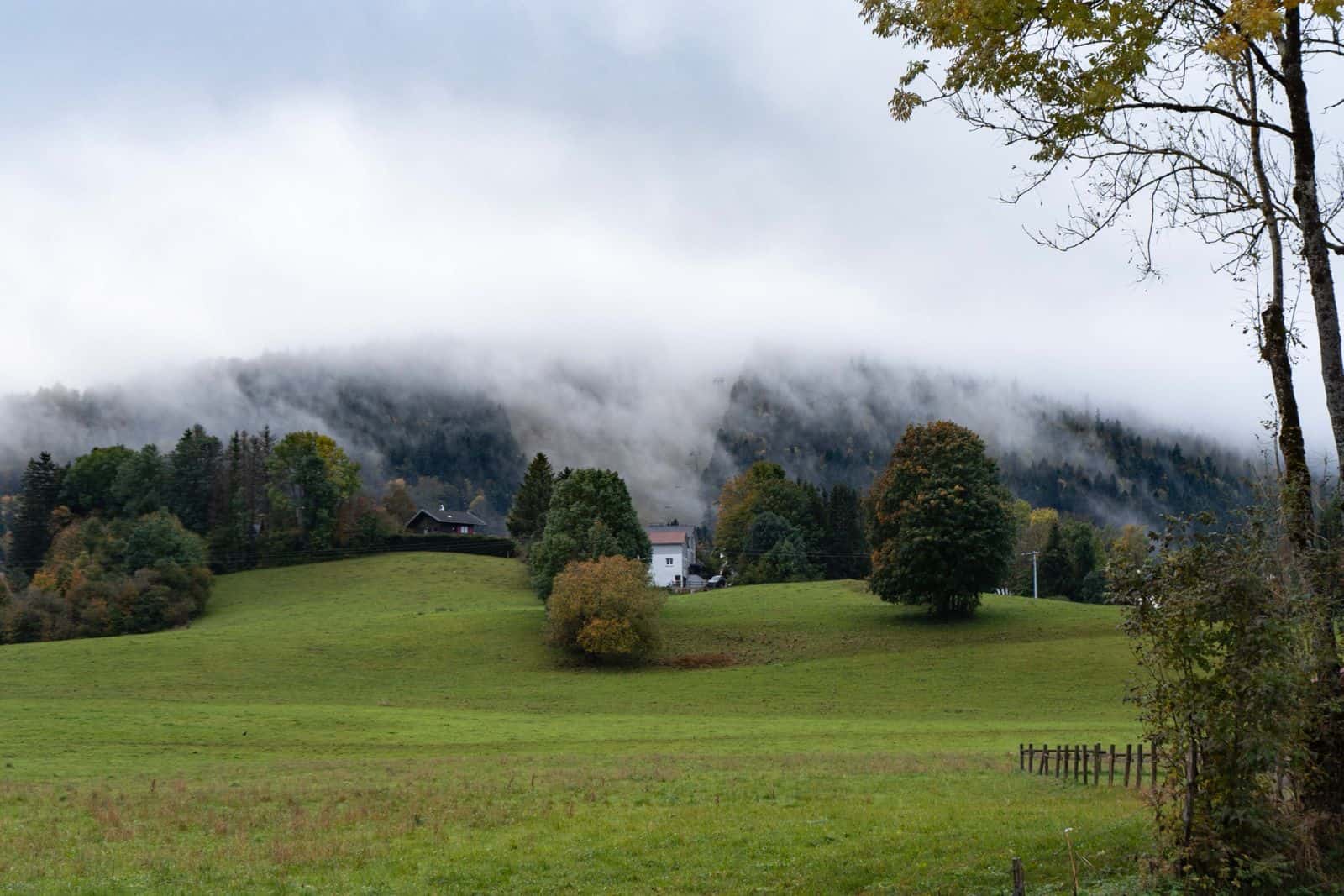(Scorri la pagina per la versione in ITALIANO)
Building Resilience in Snow Tourism: the Resilience Adaptation Model
Discover how the Resilience Adaptation Model (RAM) equips snow tourism destinations to navigate climate change, secure sustainability, and ensure long-term viability.
As climate change increasingly impacts the global environment, snow tourism destinations (STDs) face unprecedented challenges. These challenges include unpredictable snowfall, shorter winter seasons, and the need for sustainable practices that ensure long-term viability. The Resilience Adaptation Model (RAM), developed through the BeyondSnow project, provides a comprehensive framework for assessing and enhancing the resilience of snow tourism destinations. This article explores how Destination Management Organizations (DMOs) of snow tourism destinations can utilize RAM to navigate these challenges effectively and secure a sustainable future for their destinations.
The RAM is designed to assess and enhance the resilience of snow tourism destinations in the face of climate change. It offers a structured approach to evaluating a destination’s vulnerabilities, management capabilities, and tourism reliance. By systematically analysing these factors, RAM helps destinations identify areas where they are most vulnerable and provides guidance on how to strengthen their resilience.
The model is divided into four key assessment areas:
1. General Destination Indicators: This area evaluates the overall profile of the destination, including demographic changes, economic reliance on tourism, and employment in the tourism sector.
2. Climate Change and Environmental Factors: This area focuses on assessing the impact of climate change on the destination, including factors such as snowfall variability, snowmaking capabilities, and the duration of the snow season.
3. Management Capabilities: This area assesses the destination’s ability to adapt to and manage changes, including the effectiveness of ecological transition strategies, stakeholder collaboration, and the implementation of tourism and climate change adaptation strategies.
4. Tourism Indicators: This area evaluates the destination’s tourism system, including the supply and demand of tourism activities, seasonality, and the economic impact of tourism.
How can Snow Tourism Destinations benefit from RAM?
• Comprehensive Vulnerability Assessment
One of the most significant benefits of RAM is its ability to provide a detailed vulnerability assessment. By analysing factors such as seasonal snowfall, snowmaking capabilities, and the altitude of ski areas, DMOs can gain a clear understanding of their destination’s exposure to climate change. For example, destinations with lower altitudes or limited snowmaking capabilities can identify these as critical vulnerabilities. Equipped with this knowledge, DMOs can prioritize investments in technologies and practices that lower these risks, such as enhancing snowmaking infrastructure or diversifying tourism supply to include non-snow-dependent activities.
• Improved Management Capabilities
RAM emphasizes the importance of robust management capabilities in enhancing destination resilience. It assesses how well a destination is prepared to implement ecological transitions, adapt to climate change, and manage tourism sustainably. DMOs can use this assessment to identify gaps in their current management practices and develop strategies to address them. For instance, a destination that lacks a formal climate change adaptation strategy may recognize the need to develop and implement one. By doing so, they can ensure that their destination is better equipped to handle the challenges posed by climate change, such as more frequent and severe weather events.
• Strategic Decision-Making Support
The RAM provides DMOs with valuable insights that support strategic decision-making. The model’s outputs highlight critical areas where intervention is needed, allowing DMOs to make informed decisions about resource allocation and policy development. For example, if RAM indicates that a destination has a high dependency on winter tourism, DMOs might consider strategies to diversify their tourism products. This could include promoting summer activities, cultural tourism, or wellness tourism, thereby reducing the economic risks associated with a shorter winter season or unpredictable snow conditions.
• Enhanced Stakeholder Collaboration
Effective stakeholder collaboration is a cornerstone of successful destination management, particularly in the context of climate change. RAM assesses the level of collaboration among stakeholders within a destination, providing DMOs with insights into how well different groups are working together. By fostering stronger networks and encouraging collaborative initiatives, DMOs can enhance the overall resilience of their destination. This might involve creating platforms for regular communication, establishing joint projects focused on sustainability, or engaging local communities in decision-making processes.
• Sustainability and Long-Term Viability
Ultimately, the goal of RAM is to help snow tourism destinations achieve sustainability and long-term viability. By addressing the vulnerabilities identified through RAM and implementing the recommended strategies, DMOs can ensure that their destinations remain attractive to tourists, even as climate conditions change. This not only protects the economic interests of the destination but also preserves the natural environment and the well-being of local communities.
The Resilience Adaptation Model (RAM) offers snow tourism destinations a tool for navigating the challenges posed by climate change. By providing a comprehensive assessment of vulnerabilities, management capabilities, and tourism reliance, RAM empowers DMOs to make informed decisions that enhance the resilience and sustainability of their destinations. As climate change continues to reshape the global tourism landscape, the adoption of models like RAM will be crucial for ensuring the long-term success and viability of snow tourism destinations. DMOs that embrace this model will be better positioned to protect their natural assets, support their local economies, and continue to attract visitors in a changing world.
—————————————
Costruire la resilienza nel turismo della neve: il Resilience Adaptation Model
Scopri come il Resilience Adaptation Model (RAM) aiuta le destinazioni turistiche della neve ad affrontare il cambiamento climatico, garantire la sostenibilità e assicurare la loro vitalità a lungo termine.
Con l’aumento dell’impatto del cambiamento climatico sull’ambiente globale, le destinazioni turistiche della neve (STDs) affrontano sfide senza precedenti. Tra queste, nevicate sempre più imprevedibili, stagioni invernali più brevi e la necessità di adottare pratiche sostenibili per garantire la loro sopravvivenza nel lungo periodo. Il Resilience Adaptation Model (RAM), sviluppato nell’ambito del progetto BeyondSnow, offre un quadro di riferimento completo per valutare e migliorare la resilienza delle destinazioni turistiche della neve. In questo articolo, esploriamo come le Destination Management Organizations (DMO – Organizzazioni di gestione della destinazione turistica) possano utilizzare il RAM per affrontare queste sfide in modo efficace e garantire un futuro sostenibile per le loro destinazioni.
Cos’è il Resilience Adaptation Model (RAM)?
Il RAM è stato progettato per valutare e rafforzare la resilienza delle destinazioni turistiche della neve di fronte al cambiamento climatico. Fornisce un approccio strutturato per esaminare le vulnerabilità di una destinazione, le sue capacità di gestione e la sua dipendenza dal turismo invernale. Analizzando questi fattori in modo sistematico, il RAM aiuta le destinazioni a individuare le aree più vulnerabili e fornisce linee guida su come rafforzare la loro capacità di adattamento.
Il modello è suddiviso in quattro aree chiave di valutazione:
- Indicatori generali della destinazione – Analizza il profilo complessivo della destinazione, tra cui cambiamenti demografici, dipendenza economica dal turismo e occupazione nel settore turistico.
- Fattori climatici e ambientali – Esamina l’impatto del cambiamento climatico sulla destinazione, inclusi variabilità delle nevicate, capacità di innevamento artificiale e durata della stagione sciistica.
- Capacità di gestione – Valuta la capacità della destinazione di adattarsi ai cambiamenti, esaminando l’efficacia delle strategie di transizione ecologica, la collaborazione tra gli stakeholder e l’implementazione di strategie di adattamento al cambiamento climatico e al turismo.
- Indicatori turistici – Analizza il sistema turistico della destinazione, comprese l’offerta e la domanda turistica, la stagionalità e l’impatto economico del turismo.
Quali sono i benefici del RAM per le destinazioni turistiche della neve?
1. Un’analisi dettagliata della vulnerabilità
Uno dei principali vantaggi del RAM è la sua capacità di fornire una valutazione approfondita della vulnerabilità di una destinazione. Analizzando fattori come le nevicate stagionali, la capacità di innevamento artificiale e l’altitudine delle aree sciistiche, le DMO possono comprendere con precisione il grado di esposizione della loro destinazione ai rischi climatici. Ad esempio, le destinazioni situate a quote più basse o con capacità limitate di innevamento artificiale possono identificare questi aspetti come punti critici. Grazie a queste informazioni, le DMO possono dare priorità agli investimenti in tecnologie e strategie per ridurre tali rischi, come il potenziamento delle infrastrutture per l’innevamento artificiale o la diversificazione dell’offerta turistica verso attività non dipendenti dalla neve.
2. Miglioramento della capacità di gestione
Il RAM sottolinea l’importanza di solide capacità di gestione per rafforzare la resilienza della destinazione. Valuta quanto una destinazione sia preparata a implementare transizioni ecologiche, adattarsi ai cambiamenti climatici e gestire il turismo in modo sostenibile. Le DMO possono usare questa valutazione per identificare le lacune nelle pratiche di gestione attuali e sviluppare strategie mirate per colmarle. Ad esempio, una destinazione priva di una strategia formale di adattamento al cambiamento climatico potrebbe riconoscere la necessità di svilupparne una e implementarla. Questo consentirebbe alla destinazione di affrontare meglio le sfide legate al cambiamento climatico, come eventi meteorologici estremi sempre più frequenti.
3. Supporto alle decisioni strategiche
Il RAM fornisce alle DMO preziose informazioni per supportare le decisioni strategiche. I risultati evidenziano le aree critiche che richiedono interventi, consentendo alle DMO di prendere decisioni informate sulla distribuzione delle risorse e sull’elaborazione delle politiche. Ad esempio, se il RAM indica che una destinazione è fortemente dipendente dal turismo invernale, le DMO potrebbero valutare strategie per diversificare l’offerta turistica. Questo potrebbe includere la promozione di attività estive, turismo culturale o turismo del benessere, riducendo così i rischi economici legati a stagioni invernali più brevi o condizioni di neve imprevedibili.
4. Rafforzamento della collaborazione tra gli stakeholder
Una collaborazione efficace tra gli stakeholder è un elemento chiave per una gestione turistica di successo, soprattutto nel contesto del cambiamento climatico. Il RAM valuta il livello di collaborazione tra gli stakeholder di una destinazione, fornendo alle DMO una panoramica su quanto efficacemente i vari attori stiano lavorando insieme. Promuovere reti più forti e iniziative collaborative può aumentare la resilienza complessiva della destinazione. Questo potrebbe tradursi nella creazione di piattaforme di comunicazione regolari, progetti congiunti incentrati sulla sostenibilità o coinvolgimento attivo delle comunità locali nei processi decisionali.
5. Sostenibilità e vitalità a lungo termine
L’obiettivo finale del RAM è aiutare le destinazioni turistiche della neve a raggiungere la sostenibilità e garantire la loro vitalità nel lungo periodo. Affrontando le vulnerabilità individuate dal RAM e implementando le strategie raccomandate, le DMO possono assicurare che le loro destinazioni rimangano attrattive per i turisti, anche in un contesto di cambiamenti climatici. Questo non solo tutela gli interessi economici della destinazione, ma contribuisce anche a preservare l’ambiente naturale e il benessere delle comunità locali.
Il Resilience Adaptation Model (RAM) offre alle destinazioni turistiche della neve uno strumento efficace per affrontare le sfide poste dal cambiamento climatico. Fornendo un’analisi completa delle vulnerabilità, delle capacità di gestione e della dipendenza dal turismo invernale, il RAM consente alle DMO di prendere decisioni informate per migliorare la resilienza e la sostenibilità delle loro destinazioni.
Poiché il cambiamento climatico continua a trasformare il panorama turistico globale, l’adozione di modelli come il RAM sarà cruciale per garantire il successo e la vitalità a lungo termine delle destinazioni turistiche della neve. Le DMO che adotteranno questo modello saranno meglio preparate a proteggere le loro risorse naturali, sostenere le economie locali e continuare ad attrarre visitatori in un mondo in evoluzione.



